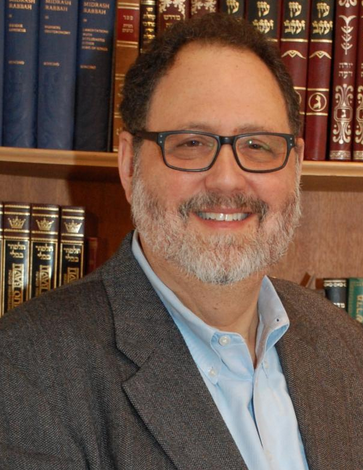Seeing is Believing: Visual T’filot and the Future of Jewish Worship
 Three years ago, my synagogue agreed to install large retractable screens on either side of the Ark and mounted projectors on the back wall of our 900 seat sanctuary. With almost no resistance, we quickly transitioned from late 15th century technology to early 21th century modalities of communicating. It was a relatively easy process. In addition to her musical talents, our Cantor discovered she had an inherent talent for developing liturgical power point. What size font, which colors, Hebrew versus transliteration, translation versus epitomes of the text, iconic images versus new art and still life versus video instantly presented themselves as questions we needed to address. One by one, we worked our way through the various technological and philosophical issues.
Three years ago, my synagogue agreed to install large retractable screens on either side of the Ark and mounted projectors on the back wall of our 900 seat sanctuary. With almost no resistance, we quickly transitioned from late 15th century technology to early 21th century modalities of communicating. It was a relatively easy process. In addition to her musical talents, our Cantor discovered she had an inherent talent for developing liturgical power point. What size font, which colors, Hebrew versus transliteration, translation versus epitomes of the text, iconic images versus new art and still life versus video instantly presented themselves as questions we needed to address. One by one, we worked our way through the various technological and philosophical issues.
We also had to decide whether to look for commercially made liturgical power points or develop our own. What we discovered was that we had ample talent to do our own thing. We had talented staff, laypeople who were professionals in the field of digital illustration and even our Bnai Mitzvah students who were eager to personalize their own services.
The results were phenomenal. Our religious school created liturgical power point classes. Students began debating among themselves how to illustrate the shma, the amidah and their own special prayers of thanks. Regular worshippers and first time visitors alike began to look up during services instead of down into their prayer books. The elderly shared that they were glad to be rid of heavy siddurim and quite happy to look up at the large letter liturgical texts well within their visual capacity.
Of course, there was some resistance. One Bat Mitzvah told me she did not want to use Visual T’filot because “Moses did not have power point.” Of course, Miriam did not have a Bat Mitzvah either, a point which impressed the student but did not cause her to change her mind. Others said they did not mind the visuals but wanted the option of using “real” books as well. No problem there. We never even discussed removing our seforim and have learned to integrate the use of print and digital in worship.
Today’s reality is that if you go to a major league ball game, you still watch half the game or more on a screen. There are digital billboards on major highways and flat screen menus in neighborhood greasy spoon diners. The digital revolution has already won the day; it is high time for the modern synagogue to catch up with its host culture.
I also have members who come to services with app based liturgy loaded into their I-phones, I-pads and tablets. We are even considering switching from the weekly memorial plaques and their old fashion orange light bulbs to a flat screen with images of the same. Early modern Judaism transitioned from handwritten books to printed books; post-modern Judaism can go digital as well.
In fact, on a cost-benefit basis, the move to digital makes a great deal of sense. It is much cheaper to install a screen and a projector than it is to buy a thousand new machzorim for the high holy days. All the unselected material can be shifted to files, texts can be customized and “new” material from original poetry to Rashi commentaries can be inserted effortlessly.
We have also learned how to use mixed media Shabbat announcements and what to display for the purpose of memorialization. My congregation finds comfort in the image of a lit yahrzeit candle before kaddish but does like seeing “the list” up on the screens.
For nearly twenty centuries, rabbis and others have debated the value of visual representations of hiddur mitzvah and the dangers of avodah zara. Today, art and illustration is widely used in Jewish life and universal visual t’filot is the next logical step in the adaptation of Judaism to the modern world.
We live in a visual world. It is time to visualize our prayers and “text” our sacred images. The polarity of service and party will lessen, behavior during services will improve and Judaism will find a new place in the eyes, minds and hearts of the Jewish people.
Visual T’filot is fun, engaging and authentic. If you are not sure how to proceed, just ask any 10 year old in your community what to do. They are ready. Are you?
Lance J. Sussman is Senior Rabbi of Reform Congregation Keneseth Israel in Elkins Park, PA. He has taught classes on Jewish History at Princeton, Temple and Rutgers University. Sussman is currently writing a book on “Jews, Judaism and Law in America.”

